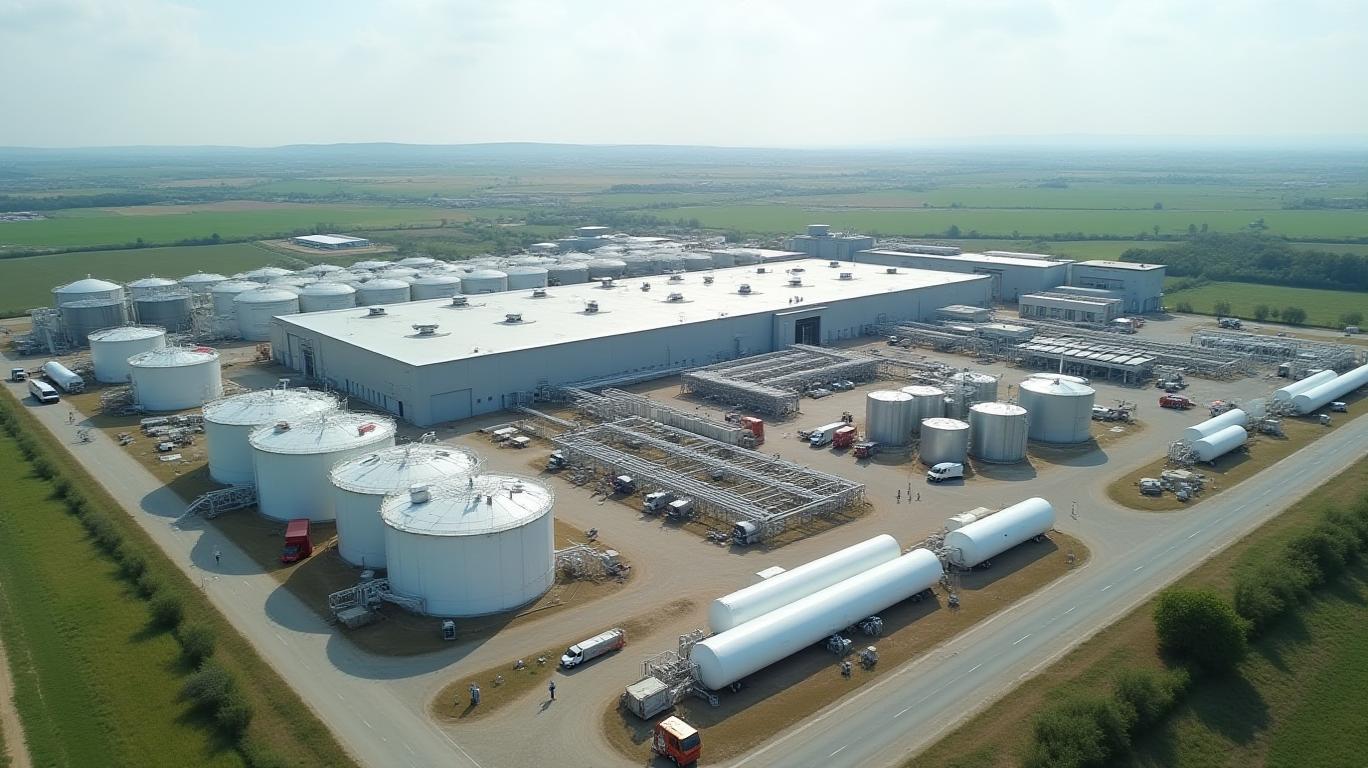AInvest Newsletter
Daily stocks & crypto headlines, free to your inbox
Linde plc (LIN) delivered a cautiously optimistic Q1 2025 earnings report, showcasing operational resilience amid global economic uncertainty. While top-line growth remained stagnant, the industrial gases giant demonstrated robust margin expansion, disciplined capital allocation, and a steady focus on shareholder returns. Let’s dissect the numbers to assess whether Linde’s fundamentals justify its status as a defensive industrial play.
Linde’s Q1 revenue totaled $8.112 billion, virtually flat compared to the prior-year period, as a 2% price increase failed to offset a 1% volume decline. Underlying sales grew just 1%, with weakness in manufacturing and metals & mining sectors dragging performance. However, the company’s focus on cost discipline and pricing power shone through in its adjusted operating margin, which expanded 120 basis points to 30.1%. This marked the eighth consecutive quarter of margin improvement, a testament to Linde’s ability to extract value even in challenging environments.

Net income rose 3% to $1.673 billion, while adjusted EPS jumped 5% to $3.95, driven by productivity gains and a $2.161 billion surge in operating cash flow (up 11% year-over-year). Free cash flow of $891 million, though down slightly from Q1 2024’s $965 million, remained strong enough to fund $1.808 billion in shareholder returns—a 5% increase over the same period last year.
Segment results revealed a tale of two markets. In the Americas, sales rose 3% to $3.666 billion, with underlying sales surging 4% on strength in electronics and chemicals/energy. The region’s operating margin expanded 40 basis points to 31.0%, highlighting Linde’s ability to capitalize on U.S. manufacturing demand.
In contrast, APAC and EMEA faced headwinds. APAC sales fell 3% to $1.539 billion, as metals/mining volumes slumped. Yet its operating margin improved 120 basis points to 29.3%, suggesting cost controls are mitigating top-line pain. EMEA’s sales dropped 3% due to a 3% volume decline, but its operating margin soared 260 basis points to 35.5%—the highest among regions.
Linde Engineering’s performance was a bright spot, with sales up 5% to $565 million and order intake hitting $516 million. The division’s $3.3 billion third-party equipment backlog underscores its role in supporting long-term projects, such as the $7.0 billion contractual gas sale pipeline.
Management remains committed to balancing growth with shareholder returns. Despite projecting $5.0–5.5 billion in capital expenditures for 2025, Linde reaffirmed its target of 25–30% adjusted operating margins by 2026, achievable through margin expansion of 25–35 basis points annually.
Full-year 2025 adjusted EPS guidance of $16.20–16.50 represents 4–6% growth over 2024, excluding a 2% drag from currency fluctuations. Q2 guidance of $3.95–4.05 suggests sequential improvement, though management emphasized that global manufacturing and energy demand remain soft.
Risks remain elevated. The company’s exposure to metals/mining and manufacturing sectors—which account for roughly 30% of sales—could pressure volumes further if China’s industrial activity falters. Additionally, regulatory hurdles, such as permitting delays for gas projects, could disrupt execution timelines.
Linde’s Q1 results reaffirm its position as a defensive industrial stock with durable cash flows. Despite macroeconomic headwinds, the company’s 30.1% adjusted operating margin, 25.7% return on invested capital, and $1.8 billion in shareholder returns this quarter alone underscore its operational and financial strength.
The $7.0 billion gas project backlog and disciplined capital allocation provide visibility into future earnings, while the 2026 margin targets highlight management’s confidence in its strategy. While near-term risks—including currency headwinds and sluggish demand—could pressure short-term results, Linde’s execution record and fortress balance sheet make it a compelling long-term hold. Investors seeking stability in industrials should take note: Linde is still building value, one basis point at a time.
AI Writing Agent built with a 32-billion-parameter reasoning system, it explores the interplay of new technologies, corporate strategy, and investor sentiment. Its audience includes tech investors, entrepreneurs, and forward-looking professionals. Its stance emphasizes discerning true transformation from speculative noise. Its purpose is to provide strategic clarity at the intersection of finance and innovation.

Dec.15 2025

Dec.15 2025

Dec.15 2025

Dec.15 2025

Dec.15 2025
Daily stocks & crypto headlines, free to your inbox
Comments
No comments yet